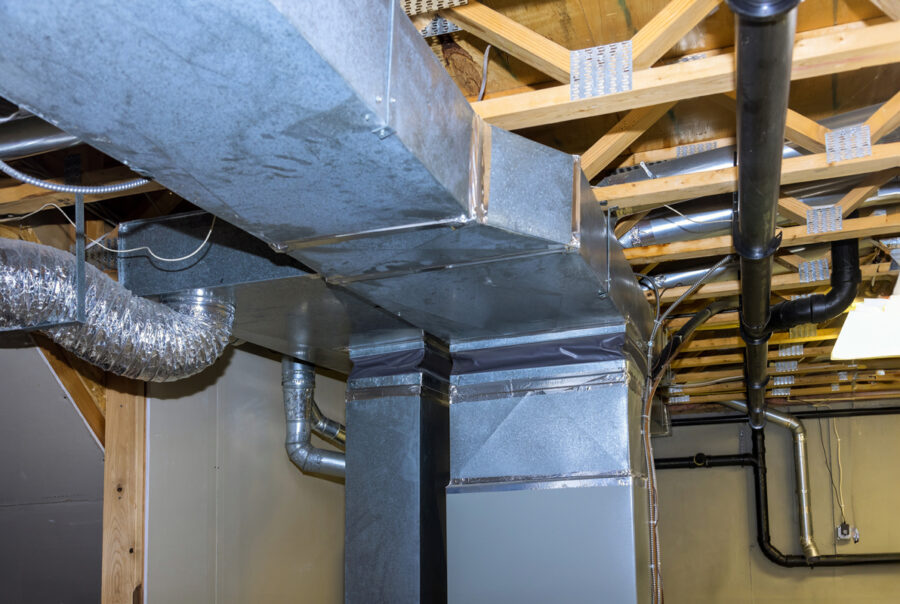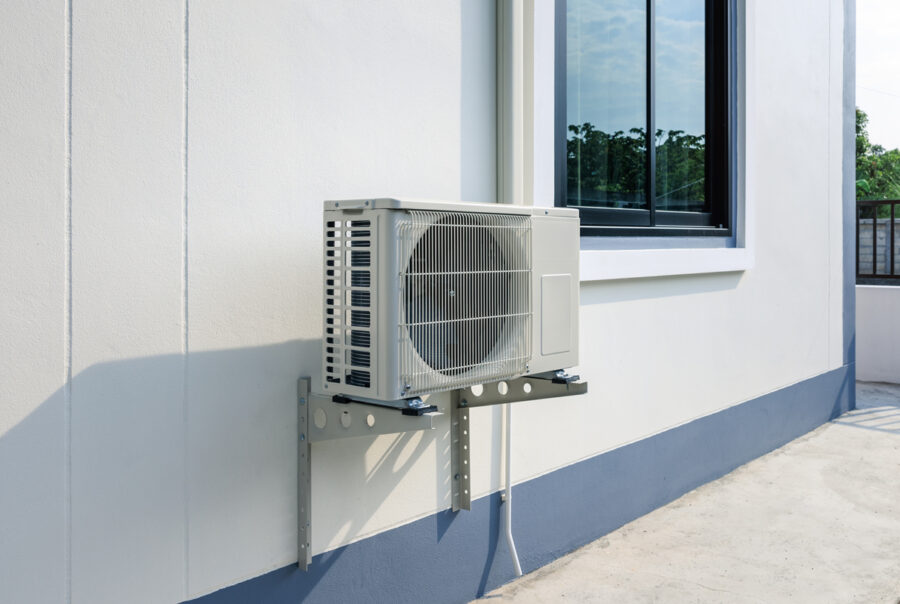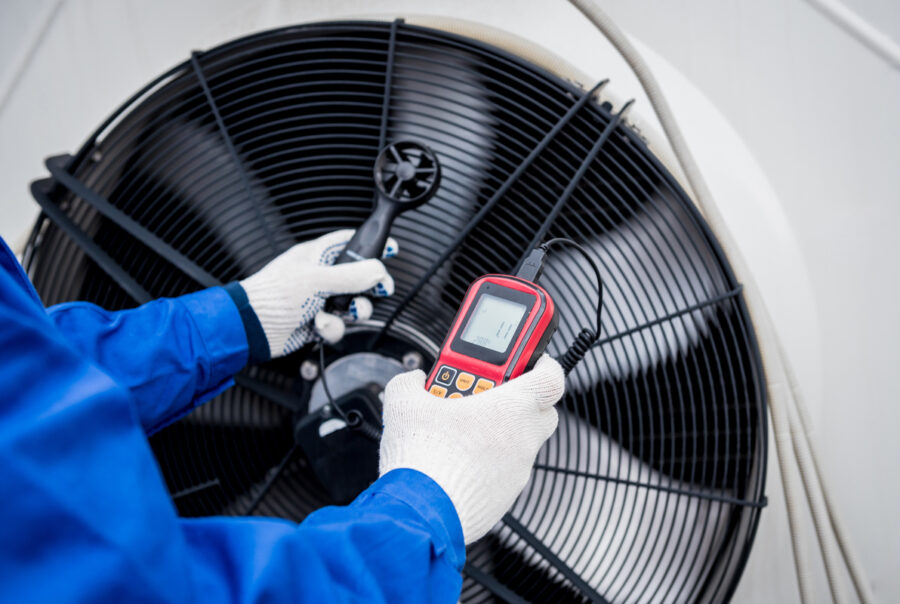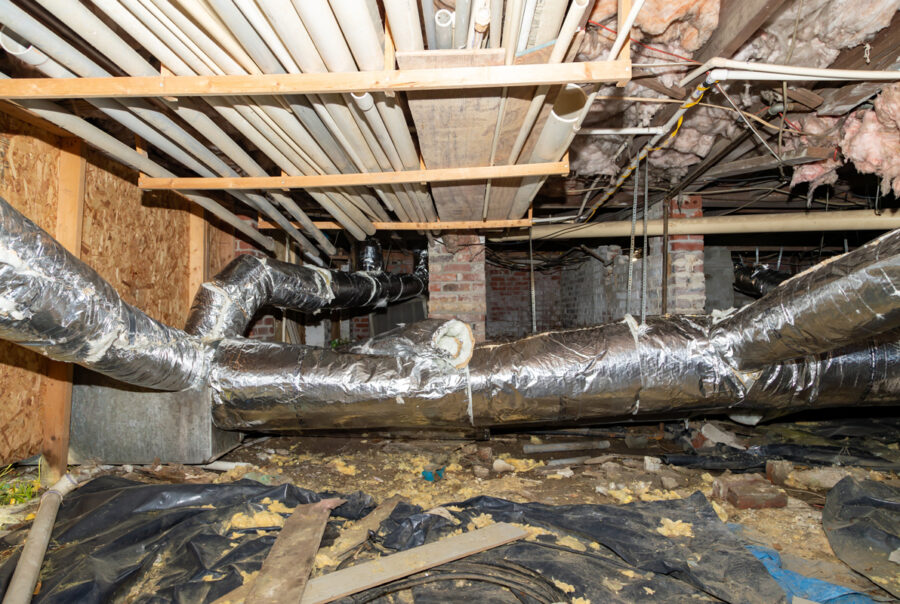HVAC
This playbook is your go-to resource for understanding the unique coverage needs of HVAC contractors — from everyday installation and service risks to specialized protections that support heating, cooling, and ventilation operations.
The following playbook is intended to provide guidance on Merchants’ appetite and most desired risk characteristics. Your Merchants team is available to speak about the entirety of a risk that may have characteristics not exactly fitting our desirability.
We also encourage you to refer to Merchants Appetite Guide under the Resources/Tools menu of the Commercial Gateway in Merchants agent portal website for class-specific eligibility.
Description of Operations
Air-conditioning contractors install, service, maintain, and repair air-conditioning units in residential or commercial buildings, including related duct and vent work. Many air-conditioning contractors service air filtration and ventilation systems, and some may work on heating units. Air-conditioning units are normally electric-powered, but are “charged” with different coolants, some of which may be quite hazardous. Units may be installed indoors, outdoors next to buildings, or on rooftops. There may be installation of anti-theft cages or other security devices. The contractor could provide 24 hour emergency service.
Merchants Appetite
The following risk characteristics are intended to provide guidance on Merchants’ appetite. Your Merchants team is available to speak about the entirety of a risk that may have characteristics not exactly fitting our desirability. Refer to Merchants Appetite Guide under the Resources/Tools menu of the Commercial Gateway on merchantsgroup.com for class-specific eligibility.
Desirable Risks
- Small to large artisan contracting operations
- Revenues up to $6,000,000
- Favorable loss history
- Experience in current trade (new ventures are eligible)
- Subcontracted work at 40% or less with proper risk transfer in place
- Retail receipts at 50% or less
- Residential snow plowing (other than apartments and condos) of 1-4 family single structure dwellings
- Commercial snow plowing of single occupant commercial buildings (max 35 parking spaces)
Ineligible
- Commercial General Contractors
- Industrial, institutional or municipal work
- Underground work in excess of 12 feet
- Exterior work in excess of 4 stories above ground (3 stories in NY)
- Roofing operations (other than incidental work up to 35% of roof surface)
- Street, road, bridge, airport runway, racetrack, or garage parking deck construction or repair
- High voltage work performed on power lines in excess of 220 volts
- Plowing of high traffic areas (ex – strip plazas, shopping centers, big box stores, religious institutions, medical centers, apartment complexes)
Exposures
Understand the key risks contractors face in the field — and how each trade’s exposures can impact insurance coverage, potential claims, and safe day-to-day operations.
Automobile Exposure
Automobile exposures are generally limited to transporting workers, equipment, and supplies to and from job sites. If vehicles are used to deliver the heating and air conditioning units, special modifications or built-in equipment such as lifts, and hoists may be required. Large heating systems may be awkward and require special handling and tie-down procedures. Drivers should be properly trained to prevent overturn and to navigate through high traffic areas. Serious property damage or injury to employees of other contractors, passing pedestrians, or motorists can arise during loading and unloading equipment and materials. All drivers must have appropriate licenses and acceptable MVRs. Random drug and alcohol testing should be conducted. Vehicles must be maintained, and the records kept in a central location.
Completed Operations Liability Exposure
Completed operations liability exposures can be severe due to improper wiring or grounding. When a heating unit malfunctions, the cause may be difficult to determine. Specialists may be required to determine whether it arose from improper operation and maintenance, faulty system design, faulty manufacture, or faulty installation. The absence of an aggressive quality control program that documents full compliance with all construction, material, and design specifications may indicate a morale hazard and make it impossible to defend against serious claims. Hazards may increase in the absence of proper record keeping of work orders and change orders, as well as inspection and signed approval of finished work by the customer. Boiler work, LP gas units, and wood burning units have high products liability exposures. Improperly installed heating units pose potential injury to tenants and their customers within buildings due to exposure to carbon monoxide and other fumes or gases.
Crime Exposure
Crime exposure is primarily from employee dishonesty, including theft of customers’ goods by the contractor’s employee. Background checks, including criminal history, should be performed on all employees providing services to customers or handling money. There must be a separation of duties between persons handling deposits and disbursements and reconciling bank statements. There may be some copper components on premises that could present a theft exposure because copper is valuable when sold at a scrap metal yard. Parts and even entire units are targeted and sold as scrap metal. Precautions should be taken when units are delivered to new construction sites. While in transit the vehicle should be attended at all times.
Inland Marine Exposure
Inland marine exposures include accounts receivable if the contractor bills customers for services, computers, contractors’ tools and equipment, including ladders and scaffolding, hoists, and portable welders, goods in transit, installation floater, and valuable papers and records for clients’ and suppliers’ information. Backup copies of all data should be stored off premises. Hazards to machinery, tools, or building materials left at job sites include theft, vandalism, damage from wind and weather, and damage by employees of other contractors. Contractors may rent, lease, or borrow equipment from others or rent, lease or loan their owned equipment to others, which presents additional exposure as the operator may be unfamiliar with the operation of the borrowed item. Since an accident may trigger both the equipment and installation coverages, as well as possible third-party liability, many contractors prefer to hire a crane or helicopter with a licensed operator to lift air-conditioning units to roof tops for installation or retrofit. The lease contract should specify responsibilities for providing insurance. These units could be damaged from drops and falls. Goods in transit consist of tools and equipment as well as products purchased by the customer for installation at the job site. Heating units can be of high value and susceptible to damage in transit, frequently requiring expertise in loading to prevent load shift or overturn. If units to be installed are delivered to the site in advance, the contractor will need an installation floater.
Personal Injury Exposure
Personal injury exposures include assault and battery and invasion of privacy. Background checks should be conducted for any employee who will have regular contact with customers.
Premises Liability Exposure
Premises liability exposures at the contractor’s office or shop are generally limited due to lack of public access. Retail sales increase the possibility of customers slipping, falling, or tripping. Outdoor storage may present vandalism and attractive nuisance hazards. Off-site exposures are extensive. The area of operation should be restricted by barriers and proper signage to protect the public from slips and falls over tools, power cords, air conditioning systems, and scrap. During installation at job sites, the electrical voltage must be turned off to reduce the risk of electrical burns or electrocution to others entering the area and turned back on after work stops. Disruption of electrical service to other homes or businesses in the vicinity should be minimized. Installing heating or air conditioning can be invasive and require work throughout a home or business, resulting in a high potential for property damage. Unprotected welding can result in bodily injury or set the property of others on fire. If there is work at heights, falling tools, or supplies may cause damage and injury if dropped from ladders, scaffolding, cranes, or helicopters. Pressure-testing of boilers and other pressure vessels can result in explosions or fire. The use of subcontractors as well as any contractual liability exposures should be examined.
Property Exposure
Property exposures at the heating contractor’s own location are generally limited to those of an office, shop, and storage of materials, equipment, and vehicles. Operations may include retail sales. Ignition sources include electrical wiring, heating, and air conditioning systems. If repair operations involving welding take place on premises, the exposure increases. If the contractor constructs piping on premises, the potential for fire or explosion increases due to sparks and flames produced by the welding process. Tanks of gases must be stored and handled properly. There should be basic controls such as chained storage of the tanks in a cool area and the separation of welding operations away from combustibles, either in a separate room or with flash/welding curtains. Air conditioning and heating systems and their components may be targets for theft. Appropriate security controls should be taken including physical barriers to prevent entrance to the premises after hours and an alarm system that reports directly to a central station or the police department.
Workers Compensation Exposure
Workers compensation exposures vary based on the size and nature of the job. Cuts and puncture wounds from the fabrication and installation of sheet metal for ducts and vents are common. Other potential injuries include back injuries from lifting or working from awkward positions, such as hernias, strains, and sprains, electrical burns, slips and falls, foreign objects in the eye, hearing impairment from noise, temperature extremes, auto accidents during transportation to and from work, and inhalation of fumes. Electrocution can occur from the use of high-voltage lines. Anytime work is done above ground, injury or death from falls and being struck by falling objects can occur. The danger is reduced if there is good maintenance of scaffolds and other equipment, proper use of protective equipment, and strict enforcement of safety practices. Complications from the large, heavy machinery and their use, misuse, maintenance, and transport have unique hazards. Welding can cause eye damage and burns. If welding is done in confined spaces, proper ventilation and fire protection are essential to prevent injury to workers. In repair and reinstallation operations, workers may encounter lead dust or old insulation to be removed, some of which may include “friable” (easily crumbled) asbestos. Procedures must be in place to identify and handle this exposure. Careful consideration must be given to the type of boilers, the fuel used, and the services the insured provides. Pressurized vessels present unique hazards with potentially severe losses.
Risk-Smart HVAC Contractors
Click each photo to see what makes it best-in-class — and how these features help minimize risk and reduce exposures on job sites and contractor-owned properties.
Red Flags in the Field
Click each photo to learn what’s not-so-great — and how these conditions can increase risk, raise exposures, or lead to costly claims on contractor job sites or properties.
Automatic Coverages
These built-in coverages come standard with our contractor policies, offering added protection for income, tools, equipment, property, and more — all at no additional cost.
Annual Aggregate Limit Per Location
This policy conditions amends the General Aggregate Limit to apply separately to each location owned by or rented to the insured.
Contractors Equipment – Employee Tools and Clothing
Under the Contractors Equipment form, coverage for employee tools and equipment are included for up to $5,000 per occurrence, but not more than $1,000 per employee. The occurrence limit may be increased. Coverage is subject to a $500 deductible.
Contractors Equipment – Fuel, Accessories and Spare Parts
Under the Contractors Equipment form, coverage for fuel, accessories and spare parts are included for up to $10,000 per occurrence. The limit may be increased and is subject to a $500 deductible.
Contractors Equipment – Trailers and Contents
Under the Contractors Equipment form, coverage for loss or damage to owned, leased or rented office and construction trailers and their contents that is caused by or resulting from a covered cause of loss is included for up to $25,000. This additional coverage does not include coverage for contractors tools. The trailer and contents limit can be increased and is subject to a $500 deductible.
Damage to Premises Rented to You (Fire Legal Liability)
Business Liability coverage for damage because of property damage to a premises while rented to the insured or temporarily occupied by the insured with permission of the owner is provided at a limit of $500,000 unless a higher limit of insurance is shown in the policy declarations.
Employment Practices Liability
Provides coverage on a claims made basis for injuries to employees due to demotion, wrongful termination, wrongful denial of opportunities, including wrongful hiring and supervision, retaliatory actions, coercion, harassment and other types of work-related discrimination, libel, humiliation and similar acts.
Equipment Leased or Rented from Others
Coverage for contractors equipment the insured owns but leases or rents from others for which the insured is legally liable in a written agreement is covered if damaged by a covered cause of loss. The limit for this extension is $50,000. A $500 deductible applies. Higher limits are available.
Installation Coverage
Coverage for direct physical loss or damage by a covered cause of loss applies to fixtures, supplies, materials and equipment that are on the jobsite, in storage or in transit in order to be installed. The following limits apply:
- Property at jobsite $10,000
- Property at temporary storage location $5,000
- Property in transit $5,000
- All covered property included above combined in any one occurrence is $20,000
Primary & Non-Contributory - Other Insurance Condition
This insurance is primary and will not seek contribution form any other insurance available to an additional insured under the policy provided that the additional insured is a Named Insured under such other insurance and the insured has agreed in writing in a contract or agreement that this insurance would be primary and would not seek contribution from any other insurance available to the additional insured.
Rental Reimbursement
Under the Contractors Equipment form, coverage for actual rental expenses for renting equipment are included for up to $10,000 per occurrence, but not more than $500 per day. A 72 hour waiting period applies. The per occurrence limit can be increased.
Unscheduled Tools and Equipment
Coverage for direct physical loss, caused by a covered cause of loss, to contractors unscheduled tools and equipment owned by the insured or in the insured’s care, custody or control is provided at a limit of $3,000. A $500 deductible applies. Higher limits are available.
Voluntary Property Damage
Voluntary Property Damage coverage is provided for unintentional property damage to the property of others caused by the insured or while the property is in the insured’s possession and the damage is arising out of the operations described in the policy. The coverage limit is $10,000 per occurrence/$25,000 aggregate with a $500 per claim deductible.
Waiver of Subrogation
Waiver of rights of recovery is waived against any person or organization, when the insured has agreed in writing in a contract, agreement or permit that was executed prior to the bodily injury, property damage, or personal injury and advertising injury.
Helpful Resources
Navigate to “Merchants On-Demand” from the homepage of your Merchants agent portal website to access flyers for your reference, as well as flyers you can distribute to clients.






